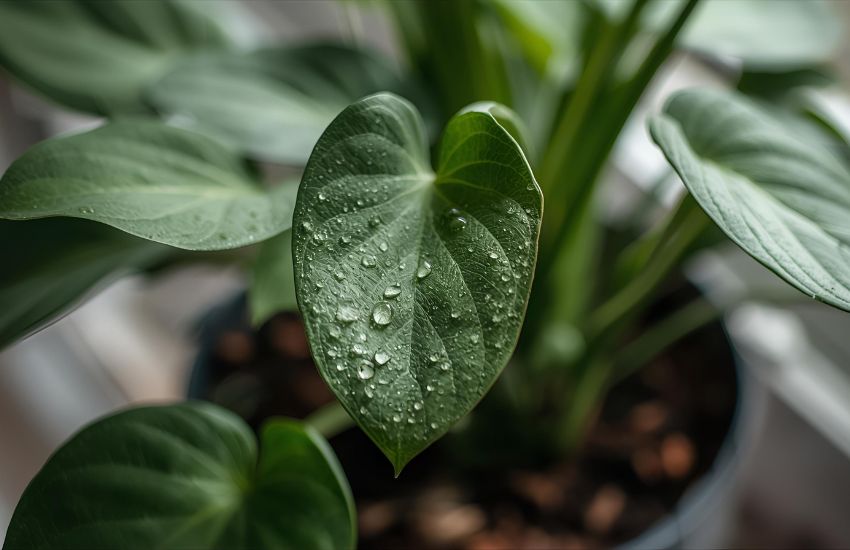When your houseplant begins to drop leaves, it can feel like a warning sign that something is going wrong especially if those leaves were once lush and green. You might wonder if it’s a natural part of the plant’s cycle or a sign of stress. The truth is, when plants drop leaves unexpectedly, it’s often their way of telling you something isn’t right.
Your plant may drop leaves due to sudden environmental changes, lack of light, low humidity, or pest issues. Inconsistent care, such as over- or underwatering, also triggers leaf drop. Identifying the cause early helps restore your houseplant and prevent further stress.
From a sudden change in environment to overlooked pest issues or inconsistent care routines, leaf drop can result from several avoidable causes. Whether your houseplant is adjusting to a new space, lacking light, or responding to temperature shifts, identifying the source early is key to recovery. Even subtle signs like leaf curling or spotting can offer important clues.
In this post, you’ll learn the most common reasons why your houseplant might drop leaves and how to respond quickly and effectively. We’ll explore environmental triggers, signs of pest damage, and how to support recovery when plants drop leaves. You’ll also discover when it might be time to repot or make changes to your plant’s routine. Stay with us to decode the real reasons behind leaf drop and how to restore your houseplant’s health fast.
Hidden Houseplant Pests That Make Your Plant Drop Leaves Fast

If your plant may suddenly begin to drop healthy foliage, it’s not always about water, light, or temperature. Often, the true culprit hides in plain sight pests that quietly feed on your plant’s sap and tissues, triggering stress and unexpected leaf loss. These insects may be small, but their impact on your plant’s health can be swift and severe.
Mealybugs: Soft-Bodied Invaders
Mealybugs are tiny, cotton-like insects that attach themselves to stems, leaf joints, and roots. They drain nutrients, causing leaves to drop prematurely. If your plant is losing leaves and showing signs of stunted growth or sticky residue, inspect closely for these pests. Isolate the affected plant and treat the plant using insecticidal soap or neem oil.
Spider Mites: Almost Invisible Trouble
These microscopic arachnids thrive in dry, low humidity environments—typical indoor conditions during colder months or when air conditioning or heating runs constantly. Spider mites puncture leaf cells, leaving behind speckled discoloration before the plant may drop leaves in response. Regular misting and cleaning can reduce their population, but severe infestations may require stronger miticides.
Scale Insects: Hidden on Stems and Undersides
Hard to detect at first, scale insects appear as small, shell-like bumps on stems and the undersides of plant leaves. They feed by sucking sap, which can cause leaf drop and deplete the nutrients it needs. If leaves are already falling, check for scale and remove them manually or apply horticultural oil for ongoing treatment.
Fungus Gnats: A Sign of Deeper Trouble
While adult gnats don’t directly cause leaves to drop, their larvae feed on roots and organic matter in wet soil. Their presence often signals that the soil feels overly wet, a condition that may also lead to leaf yellowing, underwatering symptoms, or even root rot. Use a moisture meter to check the soil, and let the top inch dry before your next watering.
Conclusion
When your plant may drop leaves without warning, it’s often a symptom of stress rather than a normal part of its growth. From hidden pests like mealybug, spider mites, and scale to environmental changes and improper care, there are many common reasons your plant’s health may decline. Recognizing the early signs—such as leaves due to underwatering, poor humidity, or soil feels overly wet can help you prevent further damage before your plant begin to drop more foliage.
If your plant is losing leaves or you notice leaves are already falling, don’t overlook the possibility of hidden insect activity. Catching these issues early is key to preventing long-term damage and encouraging new leaf growth. Regular inspections, proper plant care, and staying mindful of changes in indoor conditions like air conditioning or heating can help many plants thrive indoors.
Ready to take back control and help your plant recover? Start by inspecting your plant indoors today and adjusting your watering schedule, light, and humidity. Don’t let pests or inconsistent care cause leaf loss—give your plant the support it needs to thrive. Bookmark this guide and refer back whenever your plant’s leaves show signs of distress.
Frequently Asked Questions (Why Is My Plant Dropping Leaves? Houseplant Leaf Drop Explained Fast)
Why are the leaves dropping off my indoor plant?
Leaves may drop from indoor plants due to overwatering, underwatering, low humidity, sudden temperature changes, or insufficient light. Stress, pests, or root problems can also cause leaf loss. Inspect your plant’s environment and care routine to identify and correct the underlying issue promptly.
Why are leaves falling so soon?
Leaves may fall early due to sudden changes in light, temperature, or humidity, overwatering or underwatering, nutrient deficiencies, pest infestations, or natural seasonal shedding. Indoor plants often respond to stress by dropping leaves to conserve energy and protect overall plant health.
How do you get rid of spider mites on indoor plants?
To get rid of spider mites on indoor plants, first isolate affected plants. Spray leaves with a strong water stream to remove webs. Use insecticidal soap or neem oil on all leaf surfaces, repeating every 5–7 days. Maintain high humidity and regularly clean leaves to prevent re-infestation.
How to save a plant that is dropping leaves?
To save a plant dropping leaves, check for overwatering, underwatering, or poor light. Adjust watering, ensure proper drainage, and provide bright indirect light. Remove damaged leaves, maintain stable temperature, and increase humidity if needed. Regularly inspect for pests or diseases to help the plant recover fully.
